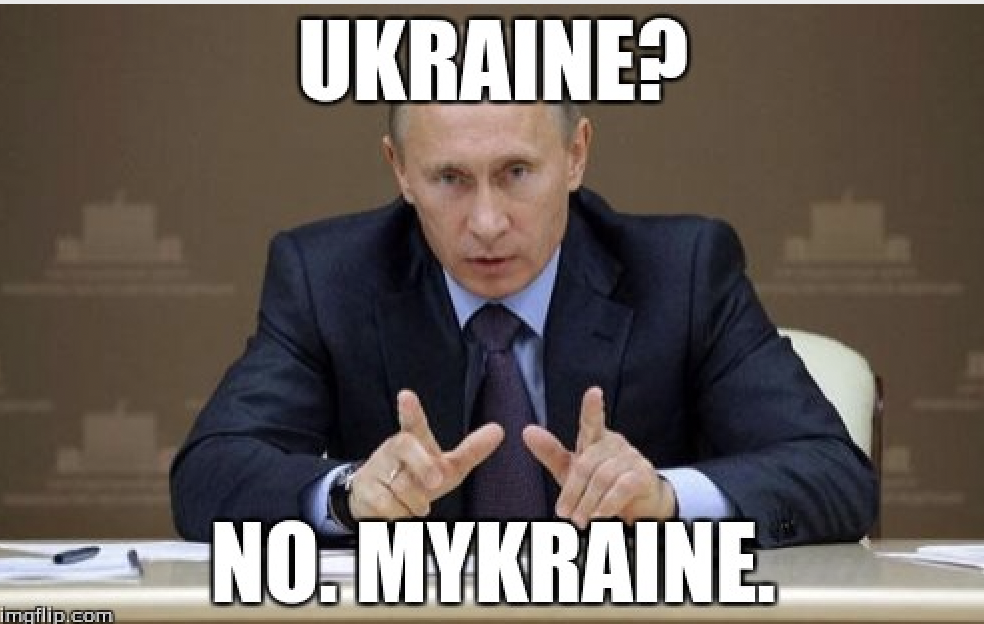GUEST BLOG: Ben Morgan – Ukraine – What’s Really Going On?

Since the last update Russian woes continue to rise, after stating that as a sign of good faith they would decrease military activity around Kyiv and Chernihiv, the Russians have continued to bomb both cities. Experts around the world told us that the Russians were lying about moving their troops away from these areas. However, this analysis overlooks the practical issues associated with withdrawing soldiers from combat.
In order to withdraw troops from a contested area, the withdrawing force needs a “pause” in the fighting to allow it to retreat. Without this pause, soldiers leaving their protected positions and retreating are very vulnerable and risk being routed. A retreating force needs one of three conditions to be present in order to withdraw safely. He must either “break contact” (separate from the enemy) by military action; normally a counter-attack or an artillery bombardment. Or, in exceptional cases, the retreating force may be able to use subterfuge and slip away. The only other option is for the enemy to let them get away.
In my opinion, the Russians are trying to pull out, but they can’t.
This is consistent with the thesis that the Russians, especially near kyiv, are trapped and close to collapse. Essentially, it appears that the Russian leadership “on the ground” in Ukraine understands that their troops are on the verge of collapse, and are therefore currently focused on attempting a withdrawal to regroup and reposition. However, carrying out this activity without it becoming a massive rout or surrender is very difficult. The proof of this hypothesis is described below:
- Russian offensive action is non-existent, we haven’t seen any significant forward momentum for weeks.
- There is now very credible evidence that Russian logistics and communications collapsed under the pressure of the battles. Reports of abandoned vehicles running out of fuel, unfed soldiers, civilian cell phones and unencrypted radios being used for communications, units running out of ammunition and medical casualties from frostbite abound, most from credible sources.
- Moreover, there is also growing evidence that Russian morale is low. Over the past few weeks there have been numerous reports of the surrender of Russian soldiers, recordings of telephone conversations that indicate low morale and on Wednesday the head of the UK’s communications intelligence service, Jeremy Fleming, reported that there was evidence of Russian units refusing to follow orders and sabotaging their equipment. Combined with the large number of senior Russian officers killed leading the front, there is strong reason to believe that Russian morale is plummeting on the front line.
- Russia’s continued use of artillery may also indicate low morale and a lack of front-line combat capability. Artillery is an easy to use weapon. Most Russian artillery fires at around 20-30 km, so it can sit at a distance, safely bombarding Ukrainian positions without a high degree of risk to individual soldiers manning these guns. An infantryman, on the other hand, must come out of his safety hole and then advance towards the enemy in order to kill or capture him. Infantrymen need to be highly motivated to be effective, gunners on the other hand are relieved from the stress of front line combat. If an army is collapsing but doesn’t want the enemy to know about it, digging in and using artillery is a useful way to keep the pressure on while you try to rebuild the motivation of your combat troops.
In the north and east, from Kyiv and Chernihiv through Sumy to Kharkov, I think the evidence shows that commanders on the ground try to “stay in the fight” while they try to organize this which will be a difficult withdrawal. However, the Russian field commanders cannot easily maneuver the frontline forces because their frontline, combat soldier morale and combat capability are too weak. This means that they cannot afford to risk a “close battle” or conduct maneuvers like failed attacks or sudden surprise withdrawals because they know their front line soldiers will fail. If they lose discipline, the Ukrainians will pounce on them and inflict many casualties. The Russians are therefore forced to use artillery to stabilize their front and retreat from their depth until they can find new troops.
Yesterday, Pentagon sources said Russian forces near Chernobyl were returning to Belarus, providing evidence to support this assessment. The Russians are “clearing up” their rear areas and this is what we would expect before a withdrawal, the armies need room to retreat. If this trend continues, it is likely that there will be no sudden surprise attacks in the region, but that withdrawing Russian troops will be sent to safe areas in Belarus and Russia to re-equip, reorganize and prepare to be transferred to the Donbass.
I think in the next few days there will be interesting developments in northern and eastern Ukraine, from Kyiv, through Chernihiv, Sumy to Kharkov. My prediction is that the Russian troops in the rear areas will continue to “thin out”. Then there will be a series of rapid Ukrainian advances in these areas as the Russian front line retreats. This was a time when chemical weapons could be used, Soviet doctrine included the use of persistent chemical agents to deny ground to enemy forces. For example, one way to break contact could be for the Russians to use chemical weapons to poison the ground their forces currently occupy, forcing the Ukrainians to pursue; stop, determine what the chemical agent is, then take steps to mitigate its effects. This would delay the pursuit and allow the retreating Russians to retreat without being attacked.
Regardless of the chemical weapons threat, expect to see Russia trying to withdraw its frontline forces to these areas in the coming days. This period is critical for the Ukrainian forces, the two phases of war with the highest casualty rates are defense and pursuit. Attacking a defending enemy is always costly, and history teaches us that retreating forces suffer heavy casualties. If Ukrainian forces can maintain contact while the Russians withdraw, they will not only sadden the Russians, but may even turn the withdrawal into a rout. Continue to monitor smaller towns like Borodianka, Makariv and Hostomel near Kyiv and areas around Chernihiv, Sumy and Kharkov for rapid Ukrainian advances.
In the south there is little movement, and it seems likely that we won’t see any significant activity here for days or weeks. Instead, Russia will learn from its mistakes and slowly build its combat power. Chechen mercenaries, Syrians and Wagner Group contractors are likely to slowly concentrate in safe, pro-Russian areas in Luhansk, Donetsk and Crimea. New Russian soldiers from Georgia and Tajikistan are also likely to be deployed in this part of Ukraine. Unlike the north, south and east, Russia has time on its side. He has safe areas and a supportive community in which to prepare his forces for the next turn.
Therefore, in the coming days, the Russian main effort will maneuver its forces in the north to better and less extended positions and while the world focuses on kyiv, Russia will slowly build up its combat power in the southeast. The Russians haven’t demonstrated the logistical capability to sustain large advances, so don’t expect them to envelop the roughly 20,000 defending Ukrainian cities like Kramatorsk, Sloviansk, and Bakhmut. Instead, expect to see the capture of Mariupol followed in the longer term by slow and steady local advances from Crimea and Donbass, as large groups of skilled mercenaries are used to capture small objectives. Once areas are captured, they can be secured by local militias or Russian conscripts mobilized from other military districts, becoming secure base areas for the next small offensive. By operating this way, the Russians can turn the war into a long battle of attrition at low cost as they slowly secure Donbass and wait for the world to lose interest in the region.
Yesterday we also received news from the United States that Putin’s generals and advisers are not providing honest updates on the conflict. This report really interested me, not because of its content but because of its source. A key problem with being a dictator is that people around you tend to tell you “what you want to hear, rather than what you need to know”, so the content was no surprise. The fact that this information comes from the Pentagon and seems quite detailed indicates that NATO and US intelligence have an in-depth view of the Russian hierarchy. Moreover, in recent days, reports of Russian spies have been arrested in Ukraine, adding to the picture that Ukraine, NATO and the United States are developing an effective intelligence operation.
Today Admiral Sir Tony Radakin, Britain’s Chief of the Defense Staff, was quoted in a speech stating;
“But in many ways, Putin has already lost. Far from being the far-sighted manipulator of events he would have us believe, Putin has damaged himself through a series of catastrophic errors of judgement. A powerful statement probably informed by good information; a statement probably intended to question the Russian hierarchy about their leader.
Two important activities will take place today and should be watched. Further negotiations are planned and I think we will see more Russian rhetoric trying to secure a ceasefire in the north and east. A ceasefire allowing them to withdraw without having to fight their way out. Secondly, today is April 1, the date on which each year Russians drafted into the armed forces must parade for their basic training. About 132,000 young men, nearing the end of their schooling, are required to parade through local military bases ready to begin their training. An interesting indication of real Russian sentiment about the war will be the number of people who show up.
In conclusion, the war is progressing as expected “on the ground” and in the coming days we expect to see activity in the north and east as the Russians maneuver, but the war is far from over. No matter how successful Ukrainians are in this area in the days to come, the world must look south and east and be prepared to support a longer struggle for Ukrainian sovereignty and democracy.
Ben Morgan is a weary Gen Xer with an interest in international politics. He’s TDB’s military analyst.



